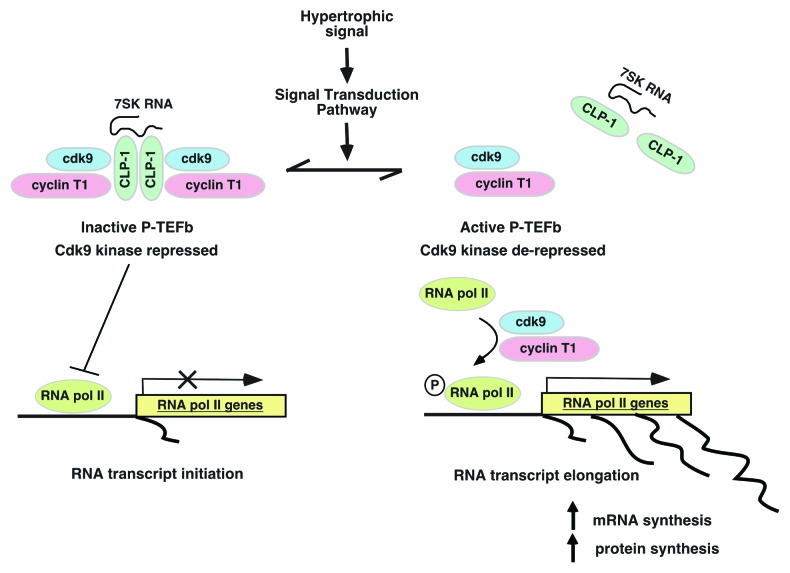Figure 3. Schematic of CLP-1 control of P-TEFb and gene transcription. When CLP-1 is bound to P-TEFb, the cdk9 kinase is inhibited and RNA pol II remains in an initiation state in which “paused” RNA synthesis produces only nascent RNAs. Dissociating or preventing CLP-1 from binding to P-TEFb de-represses cdk9 to phosphorylate RNA pol II and activate it to an elongation state in which it completes nascent RNA transcripts. The association of CLP-1 with P-TEFb is reversible and potentially subject to control by other factors such as signal transducers or transcription factors in their effort to promote transcription of their target genes.

An official website of the United States government
Here's how you know
Official websites use .gov
A
.gov website belongs to an official
government organization in the United States.
Secure .gov websites use HTTPS
A lock (
) or https:// means you've safely
connected to the .gov website. Share sensitive
information only on official, secure websites.
